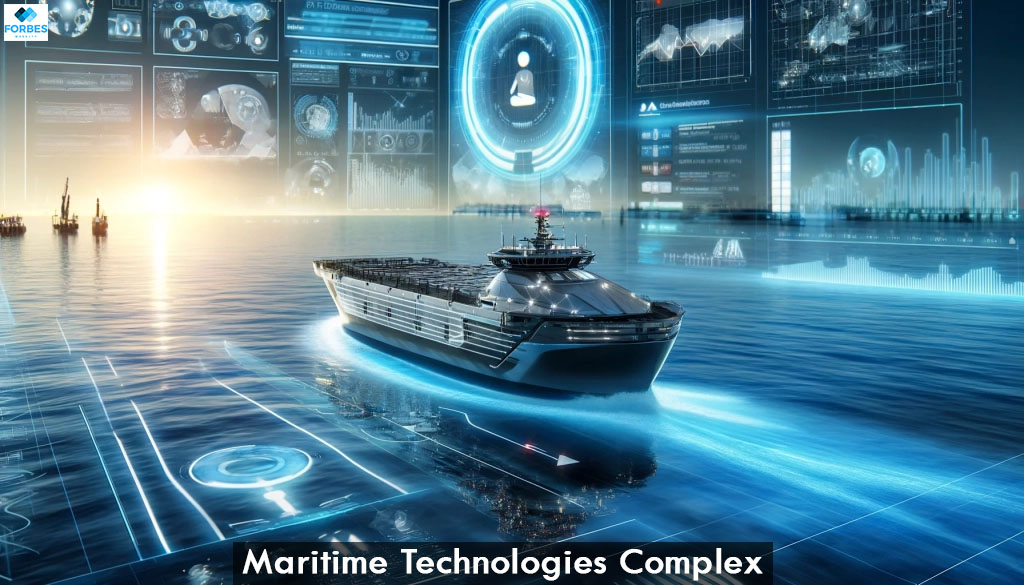Maritime Technologies Complex developed rapidly over the past few decades and greatly changed the maritime business worldwide. The roles of technologies that include better skill in navigation, phases in ship automation, and zonal automation, have become a foundation to global trade and security, and environmental conservation. This article explores the evolution of the incentives, present trends and the potential and complications of maritime technologies for the industry.
Maritime Technologies
The Maritime Technologies Complex industry has always been a technological pioneer in many ways. The first set of technologies included bauble and logs; they became developed up to blunt hulk and then to ironclad steamers in the nineteenth century. The modern era ranged from the late 1900s to the present age of diesel engines, radar and global positioning system GPS which shaped the methods of ship movement on the world’s seas.
1. Pre-Modern Technologies
During pre- industrial revolution, the maritime navigation with inherent risk was associated with celestial navigation and handiness of observation. The artificial lighting available at the time was limited and the natural lighting was used to navigate the seas, ships were rudimentary constructed of timber and other natural desire items. Even though these technologies were good enough during these periods, they restricted the scope and effectiveness of seaborne commerce.
In the following paper a historic semiotic study of the rise of industrial Maritime Technologies Complex shall be conducted.
It could be said that the beginning of the new epoch in the Maritime Technologies Complex industry is connected with the steam engine of the 18th century. People were able to travel further for longer periods of time and definitely, they used steam instead of wind. This change overhauled the general dependence on sails and other primitive methods of navigation. During the century, further advancements with maritime technology took shape; such as sonar and radar systems as well as utilizing nuclear power in the construction of naval ships.
Modern Maritime Technologies

Today’s Maritime Technologies Complex is highly technical and facing trends such as greater automation, digitalization, and the use of eco-friendly solutions. The installation of these technologies intends to make work easier, environmentally friendly and safe for operations at sea.
1. Autonomous Shipping
Undoubtedly, one of the most significant events of the modern period is the launch of autonomous shipping. Maritime Technologies Complex these are concept ships that are the movement as well as every other task on the ship will be handled by Artificial Intelligence (AI) and Machine learning. Self-sailing ships may be said to reduce expenses and enhance safety since many accidents are caused by men. Such vessels are incorporated with sophisticated measuring devices, radar gadgets, GPS and other decision-making systems that they use to plot their course and avoid objects that might be on their way without the help of a human operator.
Autonomous shipping: prominent benefits
- Reduced Crew Costs: In this way, companies are free of large crew expenses, which is a highly important factor since labour costs are considered a main line item of the maritime industry.
- Improved Safety: I think that one advantage of the use of the system is that such systems can function independently and are not prone to human element, which is the cause of the many marine disasters.
- Operational Efficiency: These vessels can work all through without break time for the crew which makes them more effective.
Some of the main problems in autonomous shipping
- Regulatory Issues: Of interest, self-governing vessels lead to emerging issues of legal nature, such as liability concerning accidents that might occur in the future or the problem of classification of ships under the laws of international maritime.
- Cybersecurity Risks: Self-sustaining ships are full of digital instruments; hence they are exposed to risks such as hacking and cyber crimes.
- Public Perception: The public and the industry experts still consider fully autonomous ships as a problem that hasn’t been solved, because of reliability and the threat to eliminate many jobs.
2. Green Maritime Technologies
Given that the importance of environmental issues grows with each year, the maritime industry is shifting to the creation of technologies that minimize carbon emissions as well as polluting impacts. These innovations are helpful in achieving the IMO goals of cutting greenhouse gas emissions from ships.
Key Green Technologies
- Wind-Assisted Propulsion: Nowadays, ships under construction are laying down features like sails and rotors as a backup for lowering fuel consumption. These systems use wind momentum to supplement the additional power for an efficient running of the ship.
- Carbon Capture and Storage (CCS): Some shipping industries are indicating interest in applying CCS technology whereby carbon dioxide emissions from the ship’s eight systems are captured and stored safely in an effort to minimize effects on the environment.
3. Advanced Navigation Systems
Advances in navigation have provided an effective tool in enhancing safety in shipping tract as well as increasing the efficiency. GPS, radar, and AIS are used to determine the position of vessels, safely navigate and identify other ships and coastal stations.
Key Navigation Tools
- LNG (Liquefied Natural Gas): LNG is more environmentally friendly than the other marine fuels such as heavy fuel oil. LNG used as a fuel in shipping is comparatively less in carbon, sulphur oxides and particulate matter than the traditional fuels used.
- Battery-Powered Vessels: This has a push towards reduction on the use of fossil fuel and battery-powered ships are being used for the short distances and in the coastal areas
- Radar Systems: Radar is applied to sense obstacles, weather conditions and other boats and ships, for safe navigation, particularly at nighttime, or in fog.
The Challenges of Maritime Technologies
However, the adoption of new Maritime Technologies Complex has not been without challenges year after year. These challenges require.Double asterisks These interventions to be confronted to unlock the full potency of these innovations.
1. Integration and Compatibility
With the advancement in Maritime Technologies Complex, the process of admitting new technologies into an existing setup has reached a point of high challenge. One technology must talk to the other seamlessly and existing systems need to be built to accommodate new forms of technologies. This involves a lot of time and energy and resources that would have been used to accomplish other tasks.
2. Regulatory Requirement and Standard
The Maritime Technologies Complex industry is regulated by many international conventions and while some regions evolve with new technologies it may take a long time to do so. Thus, such things as autonomous shipping itself prompt issues concerning liability, safety, and classification all at once. New technologies have to be implemented and have to meet the existing laws and policies so as to work towards promoting safety and security of the maritime environment.
3. Cybersecurity
Due to the supposed use of information technology systems, cyber security threat is a critical issue in the maritime sector. Maritime systems’ and/or port infrastructures’ disruption advocacy can cause catastrophic consequences such as stealing information or interrupting activities. It is therefore important that the entire maritime supply chain steps up its game and improves its cybersecurity.
Conclusion: Maritime Technologies And Future Visions
This conference shares insights on trends in the world’s ocean industries as these are being revolutionized by developing technologies. As promising as the ideas of autonomous vessels, sustainable energy, and smart navigation are, there are definite challenges that go with them. Many questions concerning the integration, regulation, and even safety from the cybersecurity point of view remain unanswered for the maritime industry to make these technologies come to life.
Looking to the future the study identifies that the maritime sector will remain a vital element in the development of the global economy and the environment. Through the adoption of these newer technologies and innovating ways to overcome the hurdles that they pose, the Maritime Technologies Complex business is in a position to manage its affairs and those of the world in the complications that make up the modern world, for the societal benefits of safety, reliability, efficiency, and sustainability, in the vessel, the transport of the commerce of the global economy.


